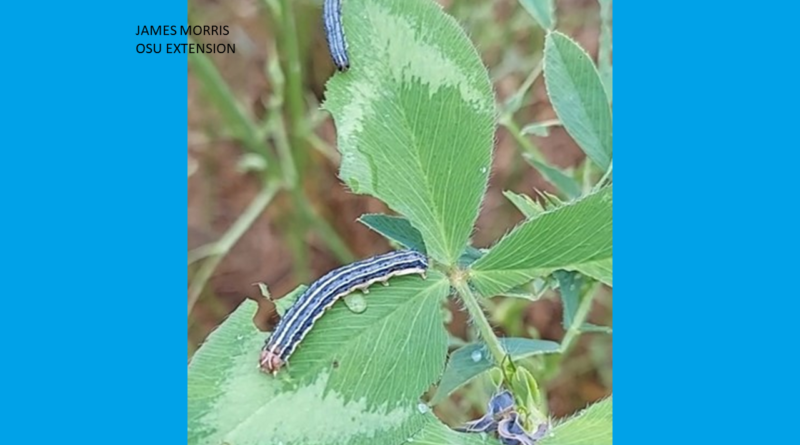Fall armyworms invade Ohio plants
COLUMBUS – Fall armyworms are invading and feeding on Ohio plants at an unusually high rate, according Monday’s C.O.R.N. Newsletter. The newsletter was written by Kelley Tilmon, Andy Michel, Mark Sulc, James Morris, Curtis Young, CCA and produced by The Ohio State University and the Ohio Agricultural Research and Development Center.
Typical armyworms cause problems in cereal crops in spring. Fall armyworms, however, migrate into Ohio during the summer and can cause problems into late summer, though typically it is not a big issue for Ohioans. Fall armyworms feed on over 100 different types of plants; including many grasses, alfalfa, soybeans, beets, cabbage, peanuts, onion, cotton, pasture grasses, millets, tomatoes, and potatoes.
Farmers are encouraged to be aware of feeding damage in their fields, especially forage crop fields that’s where a lot of the action seems to be right now.

Fall armyworms are easier to kill when they are smaller. People are asked to look for egg masses glued on both vegetation structures, like fence posts. Egg masses have a fluffy-looking cove; and, when their cover is peeled back, eggs are pearly and tan when new, and turn darker as they approach egg-hatch.

Fall armyworms don’t overwinter in Ohio. Moths come up from the South early in the season and temporarily colonize the area, especially in grassy areas. The current caterpillars are second generation. If there is a warm fall, there could be a third generation. Because of this, scouting for fall armyworms should continue for the rest of the fall season.
Hay fields that are near harvest are recommended to be harvested now, and then the regrowth closely monitored for fall armyworm activity.
If alfalfa or grass hay fields are badly damaged, they should be cut and then rested for the rest of this fall with no fall cutting. They then should be monitored closely for the regrowth of re-infestation. Established alfalfa should come back from fall armyworm damage. Recovery of cool-season perennial grasses may depend on the relative severity of the damage, the overall health of the stand going into the infestation, and how many young tillers were not consumed.

